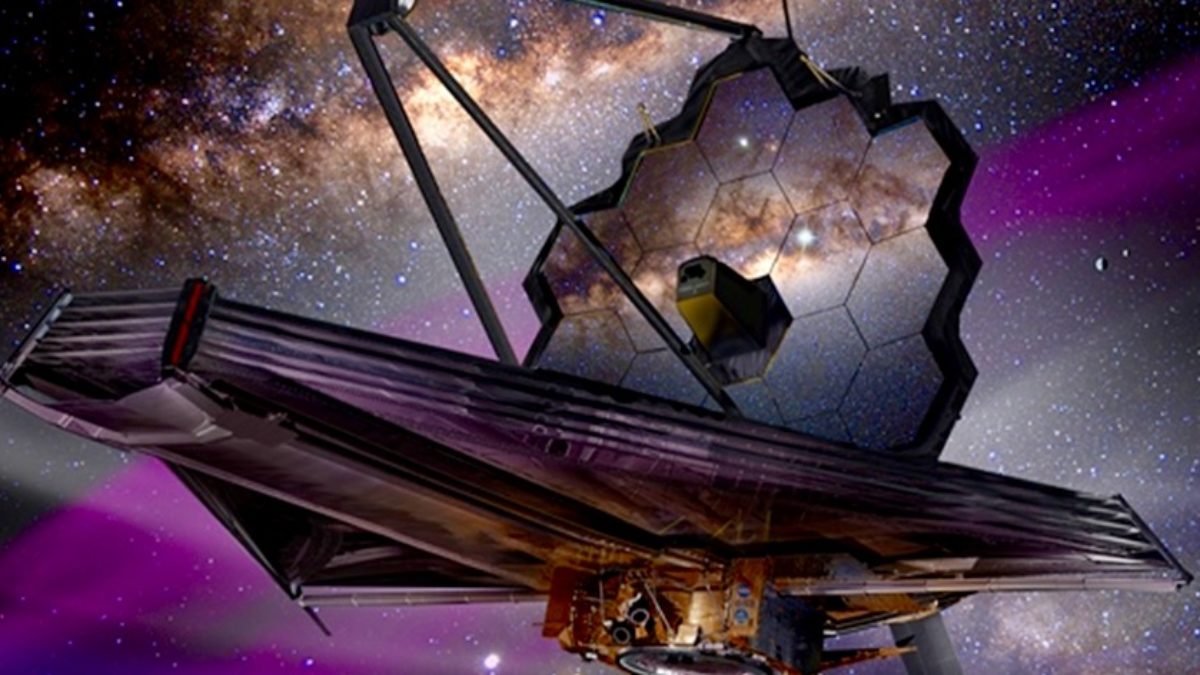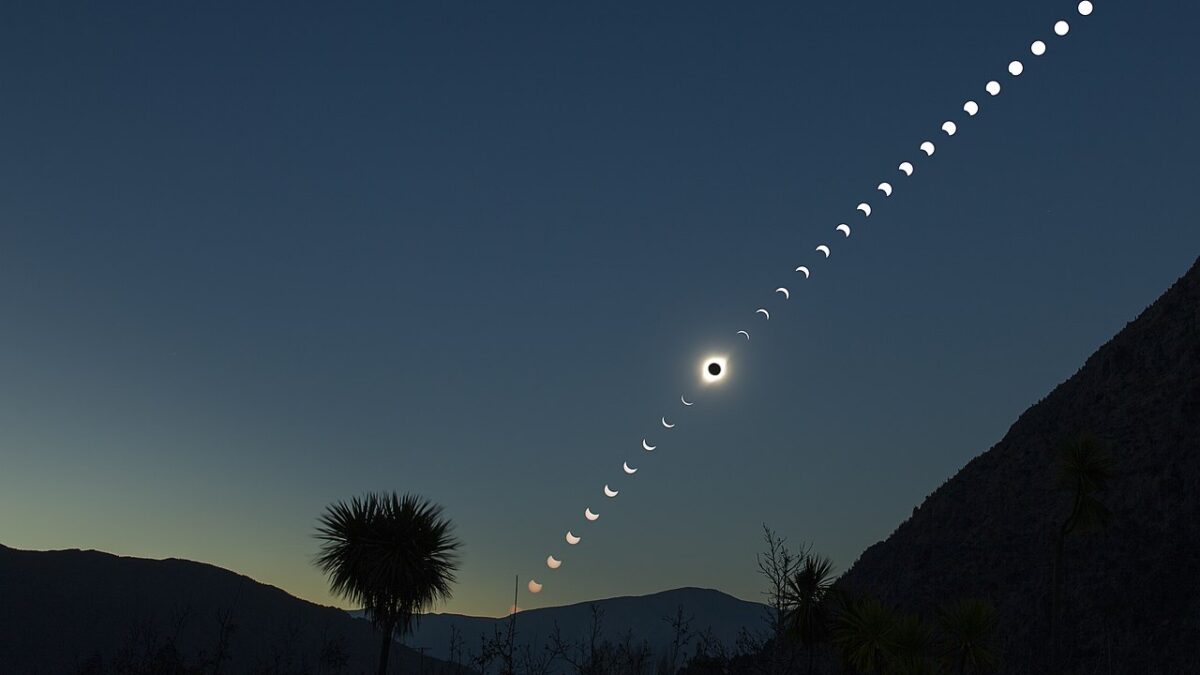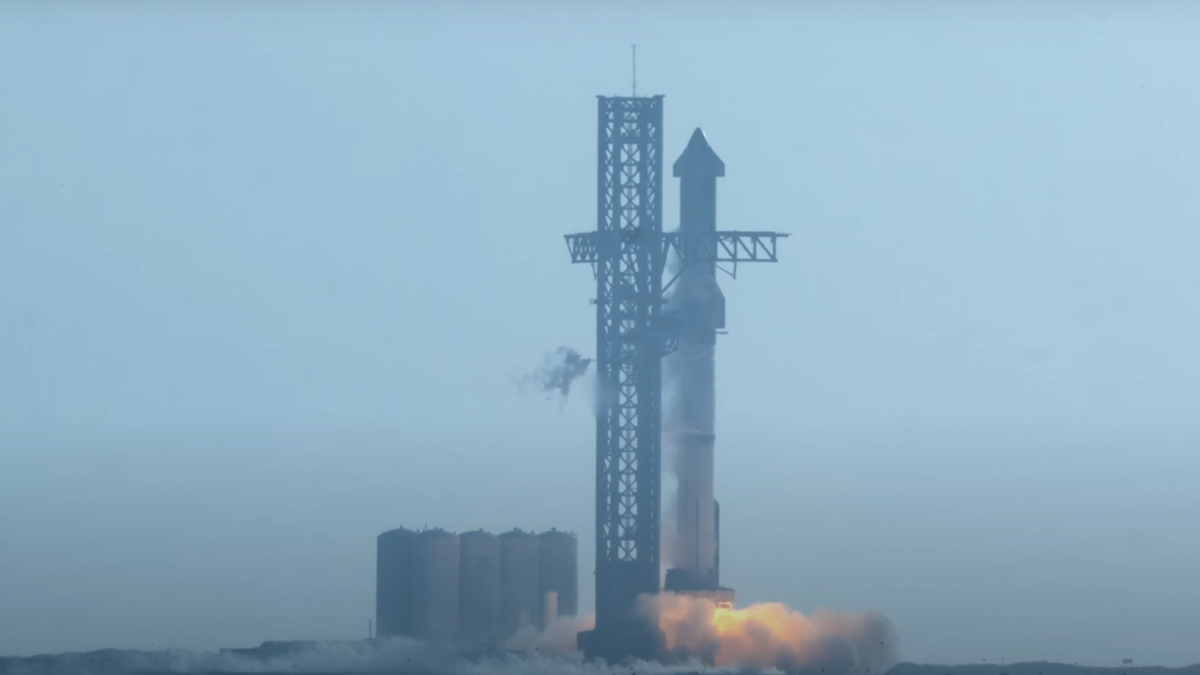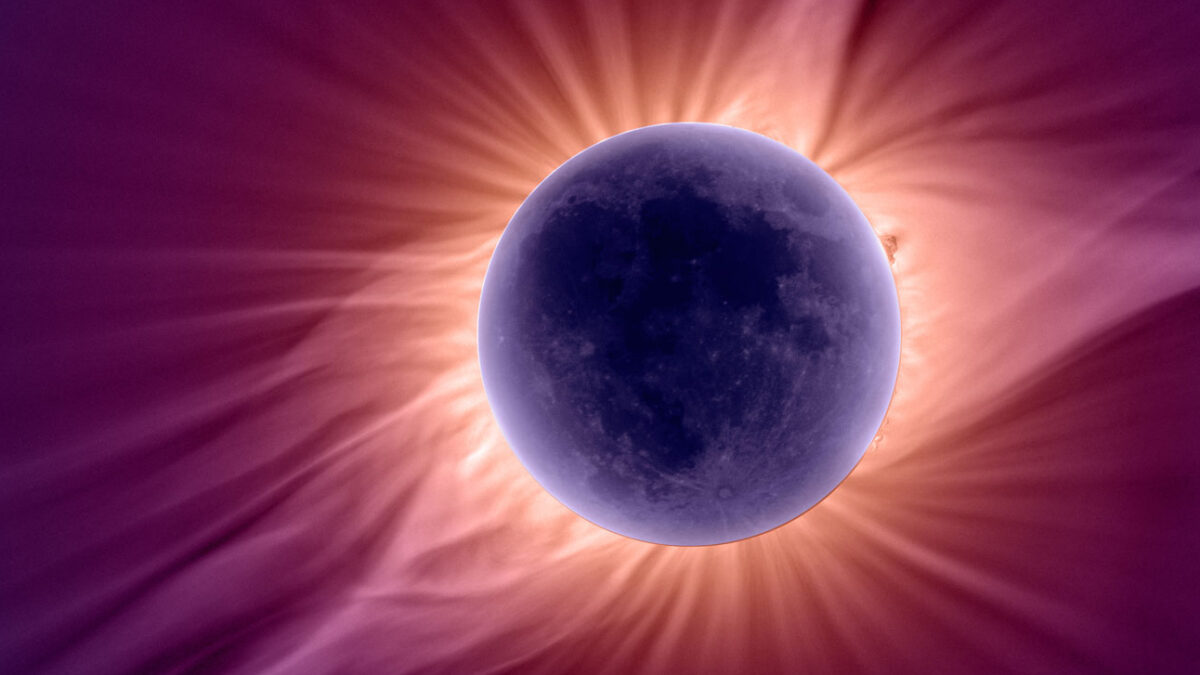Today, the James Webb Space Telescope (JWST, or Webb) reaches its position in solar orbit. Launched on Christmas Day from Kourou in French Guiana on an Ariane 5ECA rocket, the seven-ton Webb represents the most sophisticated instrument ever conceived for measuring the cosmos.
Its infrared and spectroscopic sensors are designed to peer into the visible universe’s edge roughly a quarter- to a half-billion years after the Big Bang, when the universe became optically transparent (an event called “recombination”). Prior to this, scientists posit the ionized universe was too hot to enable stable atoms to form.
To provide some perspective, 500 million years is as distant from the present as when trilobites first appeared, but represents less than 4 percent of the universe’s estimated age. The infrared spectrum—with light wavelengths somewhat longer than the visible spectrum—is also less opaque for interstellar dust, enabling astronomers to see celestial objects otherwise obscured from earth.
As the universe expands, the light from distant celestial objects decreases in frequency, so the visible ultraviolet photons upon reaching our instruments have stretched their wavelengths into the infrared or even microwave bands. Stephen C. Meyer, the author of “Return of the God Hypothesis,” explains Webb’s importance to improved cosmic understanding in our ongoing quest for knowledge.
Webb’s final destination corresponds to its second Lagrange Point, almost 1 million miles beyond home and four times our distance to the moon. For those who skipped orbital mechanics in college, the gravitational attraction by a pair of massive bodies presents nodes, where a small object can hover at its relative position to its much larger neighbors.
Each binary system has five such nodes, called Lagrange Points. The second such position, called L2, is situated behind earth in relation to the sun. At this location, earth’s dark side perpetually faces Webb.
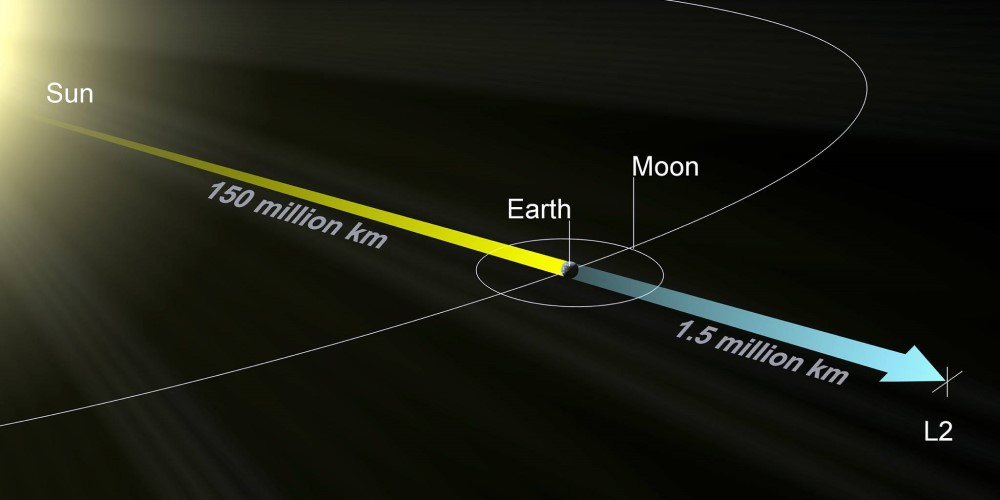
As a cooperative venture by NASA Goddard, the European Space Agency (ESA), and the Canadian Space Agency, the JWST project presented major design engineering and integration challenges across its quarter-century development. To exploit an additional 13 percent increase in initial velocity from earth’s rotation, Webb passed through the Panama Canal following final evaluation in Redondo Beach, California to launch near the Amazon mouth rather than from Cape Canaveral.
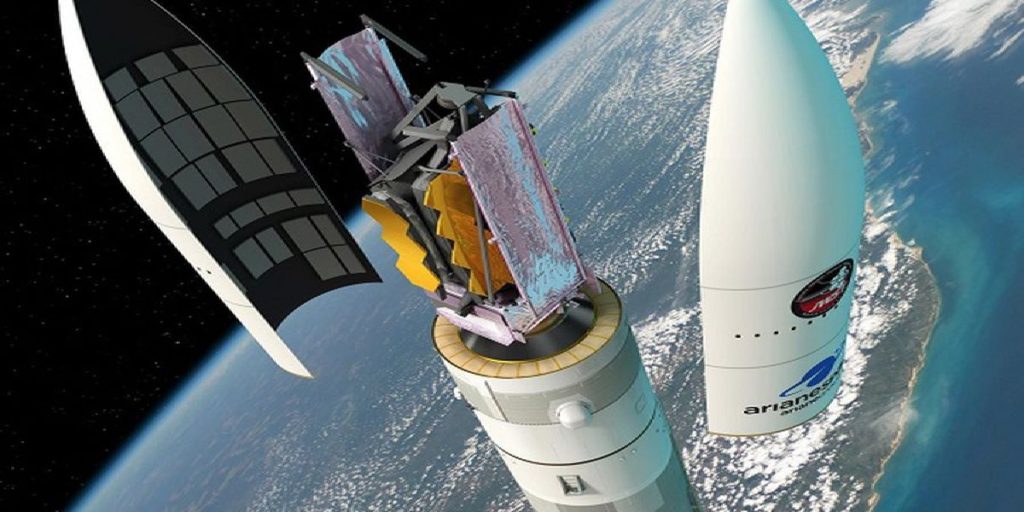
Webb represents a technological marvel designed for unforgiving requirements to operate hundreds of components without error. This monumental engineering accomplishment combines a photon collector and an equipment assembly under contract to Northrop Grumman.
Solar panels provide two kilowatts of power, about half that used by a lawnmower. A primary mirror gathers photons that then reflect through a secondary mirror for directing to infrared detectors.
Supported by a carbon-fiber truss, the primary mirror comprises 18 gold-plated hexagonal tiles designed to flex and tilt via motors. These tiles are composed of beryllium (recall the power control sphere from “Galaxy Quest”), which is both lightweight and stiff. Their total starlight collection area is 48 square feet—five times that of the Hubble Space Telescope (at launch in 1990), despite Webb weighing only 60 percent as much.
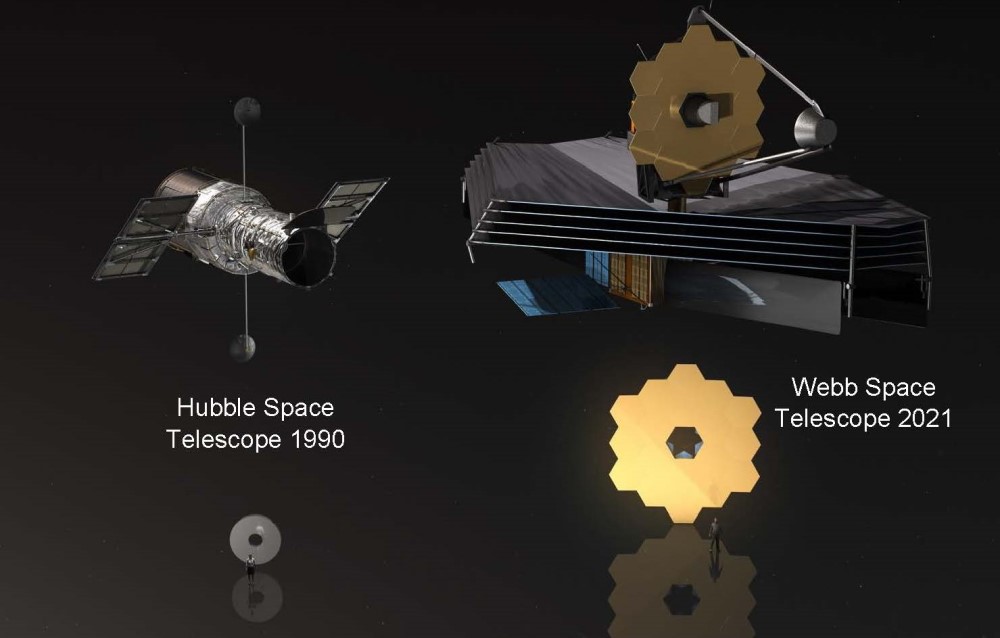
To ensure adequate infrared sensitivity, an ingenious sun shield passively cools Webb’s mirror tiles to –388 degrees Fahrenheit. With the area of a tennis court, the sun shield faces earth and sun, deflecting and reradiating the sun’s energy away from the primary mirror.
Behind the sun shield, a carbon-fiber container called the “spacecraft bus” stores communication and instrumentation equipment. After arriving at L2, control systems on board will align and calibrate the tiles to ensure proper focus.
Designing and fabricating the sun shield itself presented enormous difficulties. The sun shield comprises five sheets of Kapton polyimide plastic from DuPont coated with aluminum. The two outermost layers include an additional thin layer of silicon to reflect solar energy away from the mirrors.
Seams reinforce the sheets to inhibit lengthy rips when struck by micrometeorites. These sheets were folded origami-style into a 15-foot diameter cylinder to fit within the Ariane fairing. While boosted along Webb’s trajectory towards L2, the sun shield had to then carefully unfurl via multiple cables and pulleys tugged by motors.
Although the sun shield protects the mirrors from solar radiation, the mid-IR detection instrument behind the primary mirror must be further cooled to –448 degrees Fahrenheit. An acoustic resonance chamber specifically configured for the Webb mission accomplishes this energy transfer. This cryocooler buffets helium atoms to thermally separate them and uses heat exchangers to radiate away the excess energy.
The telescope’s namesake, James E. Webb (1906-1992), served as NASA’s second director. He was the man who guided the Apollo lunar program. A veteran of the Marine Corps, he vigorously defended manned space missions to skeptical congressional representatives and senators, handling life-threatening crises that arose during these breakneck developments. Leftist grievance activists sought to have the telescope renamed, but NASA declined to cave into these cancel culture demands.
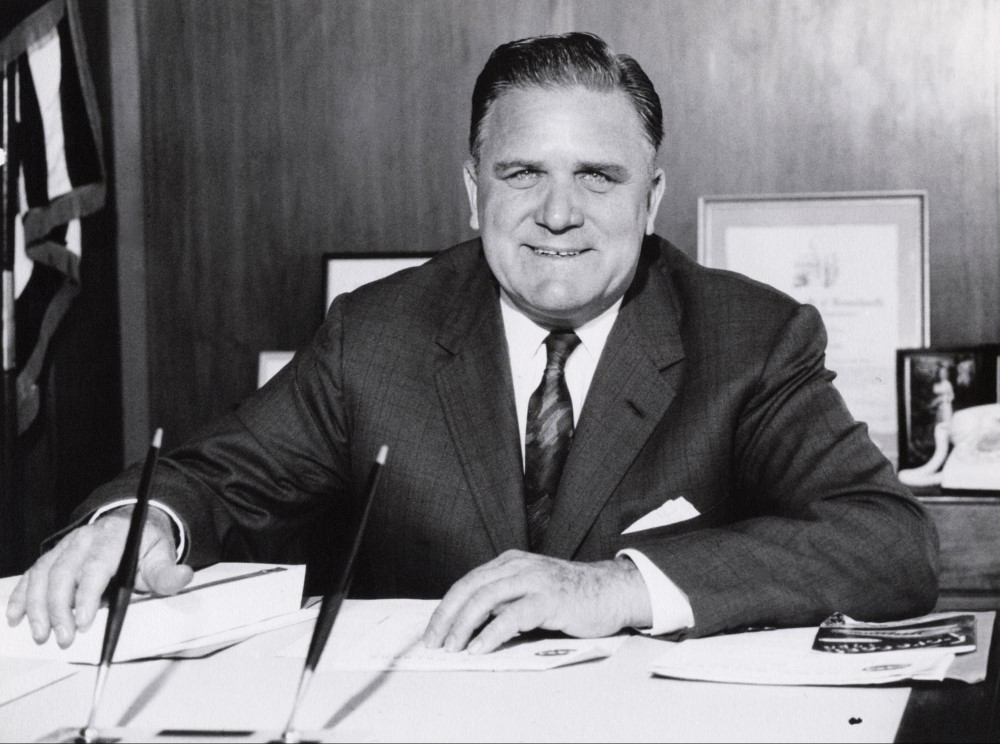
Professor of chemistry Anna Krylov warns that politicizing technological endeavors disrupts scientific discovery. Refusing to recognize predecessors whose achievements have provided astounding improvements in society is a hallmark of déclassé grifters envious of others who possess the skill and self-discipline to embark on such difficult assignments.
Although their intimidation shakedowns have infiltrated Lockheed and Raytheon management, one can expect that many in the science, technology, engineering, and mathematics (STEM) community will resist this encroachment. Merely imagining STEM professionals’ reception of diversity charlatans banning terms such as “blackbody radiation,” “white noise,” and “male and female fittings” provokes considerable amusement.
The 20th-century German historian Oswald Spengler issued pessimistic predictions about the continuance of western culture in “Decline of the West.” Towards the end of that second volume, however, he glimpsed a distinctive observation regarding what he called “the Machine” that represents our technological civilization.
“[T]he very existence of the industry depends upon… talented rigorously schooled brains that command the technique and develop it onward…. The quiet engineer… is the machine’s master and destiny…. When… the crop of recruits for this army fails,… the industry must flicker out.”
Individual techies might be expendable, but they are not en masse. Without such persons, technology vanishes, and society descends to prehistoric subsistence. Alternatively, we can study Mandarin before the rush.
To accomplish socially significant projects like Webb, the STEM community depends on the broader polity by which compatible goals can be shared. It’s interesting that China’s tripling of its economy over the past three decades has been overseen by three science-minded executives since 1993: Jiang Zemin (electrical engineer), Hu Jintao (hydraulic engineer), and currently Xi Jinping (chemical engineer). Over the same period our presidents—either lawyers (Bill Clinton, Barack Obama, and Joe Biden) or businessmen (George W. Bush and Donald Trump)—have carelessly squandered America’s global-influencing heritage and fecklessly imperiled her national security.
Webb presents a tremendous milestone in space exploration: a telescope with the power to peer even beyond Hubble’s magnificent accomplishments. Future astronomy may envision subsequent celestial light-gathering devices assembled in low-earth orbit for even better insight into God’s creation. In the meantime, we can bask in the achievement of the teams of scientists and engineers who brought Webb to fruition.
